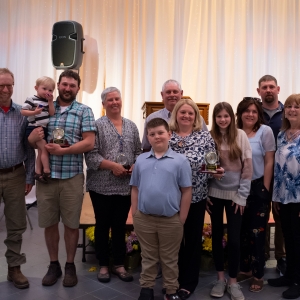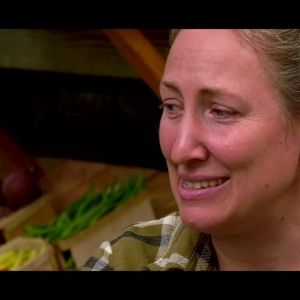Other Ag News: Earth Day: A Celebration and a Call to Action
The best time to plant a tree is 20 years ago; the second-best time to plant a tree is now. This idea captures the essence of Earth Day – both a celebration of our planet and a call to action for a resilient and sustainable future.
As we commemorate Earth Day this year, it’s also important to acknowledge the urgency of addressing climate change. Yes, the challenges may seem daunting but targeted collective action can make a difference. A positive and proactive approach can bring us closer to a greener tomorrow.
Perhaps we’re biased, but there is solace in studying agroforestry – integrating trees and shrubs into agricultural landscapes and production systems. The only carbon capture and storage technology that is proven, cost-effective, and scalable is tree planting. On average a mature live tree can sequester about 50 pounds of carbon per year in its tissues, so it would take about 700 mature live trees to sequester the average American’s annual emission footprint of 16 metric tons (compared to the global average of 4 metric tons).
It’s imperative that we protect the forests and mature trees around us, and that we plant more for future generations. Just as important as planting a seedling, is ensuring its survival for the first three years, so it can establish itself. Follow these tips to help get your seedling off to a good start:
- Choose the right species for the right site: Most trees are quite particular about where they will thrive, so matching the conditions of a planting site to the growing requirements of a tree is key. Some trees can’t abide poorly drained soil; others have very specific light needs. If you are new to tree planting, consider a hardy species that can tolerate a range of conditions. Swamp white oak (Quercus bicolor) and tulip poplar (Liriodendron tulipifera) are good options for beginners.
- Invest in site preparation: Seedlings are tender and fragile things, so the more effort you put into preparing them and their new home, the more likely they are to thrive. Clear away any competing vegetation and loosen the soil to facilitate root growth. Dig your hole wider than the root ball, and shallow enough that the root collar is above the soil surface; ensure the roots are gently loosened and teased apart prior to planting.
- Don’t forget to water: Seedlings are easily stressed if conditions are too dry. Newly planted trees require regular watering to establish healthy root systems. Water deeply and consistently, especially during dry periods, to promote root growth and prevent stress.
- Mulch and protect: Apply a layer of mulch around the base of the tree to conserve soil moisture, suppress weeds, and regulate soil temperature. Use tree guards or fencing to protect young seedlings from browsing animals and mechanical damage.
These steps can increase the likelihood of your tree seedlings thriving and maximizing their carbon sequestration potential. Every tree planted is a valuable contribution to our collective efforts to combat climate change and build a more sustainable future.
This Earth Day, let’s celebrate the power of trees! Whether you’re planting trees in your backyard, community park, or urban streetscape, your efforts make a difference. Together, we can create a greener, more resilient world for generations to come.
The post Earth Day: A Celebration and a Call to Action appeared first on Cornell Small Farms.
Signup for the Ag Newsletter
Get the freshest farm news, events and updates from in and around Cattaraugus County, NY at least once a month! Go signup!
Other ways to stay connected:
Get Involved in Farming
Resources for Starting a Farm in Cattaraugus County
Profile of Cattaraugus County soils
Agriculture Career Exploration
Questions about farming? Find out Who to Call











